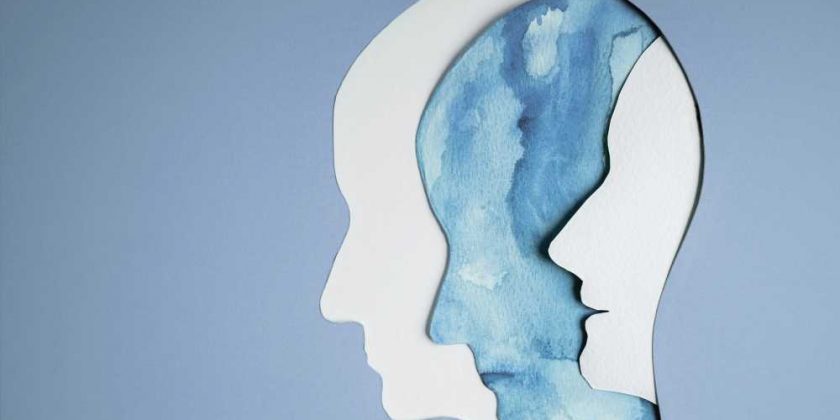In a recent study published in Frontiers in Communication, researchers explored how mood influences the processing of relatively neutral discourse content.

Mood state is a low-intensity, diffuse, and enduring affective state, different from emotion. Mood states permeate multiple levels of information processing, as in prioritizing access for mood-congruent content and loosening cognitive control to incorporate distant semantic associates.
Much work on the effects of mood on language processing relied on electroencephalography (EEG), which demonstrated that mood influences language processing and the mode/style of processing of listeners/readers.
About the study
In the present study, researchers assessed how mood influences the balance between relying on the world and discourse knowledge. They enrolled 34 native Dutch-speaking females from a university in the Netherlands. Recruitment was restricted to females only because prior studies suggested more successful mood manipulation in females than males.
The team created a critical sentence ending with critical words (more or less) – ‘with lights, one can see more/less,’ wherein general knowledge supports the critical word ‘more’ (s+), not ‘less’ (s-). The critical sentence was presented with a discourse context that backed general knowledge (driving in the night, d+) or supported an alternative but less familiar possibility (stargazing, d-).
Therefore, in condition d+s+, both common knowledge and discourse context would support the critical word ‘more.’ Contrastingly, in the d-s- condition, the critical word ‘less’ supported neither. In condition d+s-, familiar knowledge would not support the critical word (less), but the stargazing discourse context would.
In condition d-s+, world knowledge would support the critical word (more), while the discourse context (stargazing) would not. The team induced positive/negative mood states using film clips. Five clips from a sad movie (Sophie’s Choice) or a situation comedy (Friends) were used to induce a negative or positive mood. Participants were scheduled for two sessions, one week apart.
Each session began with an EEG setup, during which participants completed the personality trait questionnaire of positive and negative affect schedule (PANAS) and Edinburgh inventory of handedness. Participants watched the intended film clips and were subsequently presented with the discourse content while monitoring EEG.
Findings
Participants showed no differences in mood states between sessions at baseline. However, significant mood differences were evident after watching film clips between sessions. Their mood dropped negatively relative to baseline after watching sad clips. By contrast, their mood was not elevated or down relative to baseline after watching cheerful clips.
The team observed normal visual processing in participants in each session based on perceptual event-related potential (ERP) components (N1 and P2). Negative waveforms peaking at 400 ms (N400s) followed the perceptual components. d-s- condition induced more negative N400s than d+s+ in both mood states. The late positive components (LPCs) were evident at 600 ms, which sustained until 1000 ms.
The team observed that mood did not modulate N400 effects but modulated LPC effects. For example, critical words supported by general knowledge (d-s+), discourse (d+s-), or neither (d-s-) elicited larger LPCs in the frontal brain relative to the condition where critical words were supported by both knowledge and discourse (d+s+), when participants were in a negative mood but not when in a positive mood.
Conclusions
The researchers performed an ERP experiment to assess if mood states influenced readers when presented with relatively neutral discourse content. They observed that mood was not modulating N400 effects. Critical words unsupported by knowledge and discourse (d-s-) in either mood state induced the highest N400 relative to the other three conditions.
Nevertheless, mood-modulated LPC effects in the frontal brain. In the negative mood, critical words unsupported by knowledge, discourse, or both induced larger LPCs relative to the condition in which both knowledge and discourse supported the critical words. In the positive mood state, there were no LPC changes between conditions.
The researchers hypothesized that people in a positive mood would follow default knowledge while those in a negative mood would analyze details in the discourse. However, this was not entirely true, as individuals in a positive mood appeared to entertain meaning from both sources. In contrast, participants in a negative mood relied on discourse, re-analyzing details in all conditions with conflicting information between sources.
- Lai VT, van Berkum J, Hagoort P. (2022). Negative affect increases reanalysis of conflicts between discourse context and world knowledge. Frontiers in Communication. doi: 10.3389/fcomm.2022.910482 https://www.frontiersin.org/articles/10.3389/fcomm.2022.910482/full
Posted in: Medical Science News | Medical Research News | Miscellaneous News
Tags: Brain, Language

Written by
Tarun Sai Lomte
Tarun is a writer based in Hyderabad, India. He has a Master’s degree in Biotechnology from the University of Hyderabad and is enthusiastic about scientific research. He enjoys reading research papers and literature reviews and is passionate about writing.
Source: Read Full Article
